Five
THAT’S ENTERTAINMENT
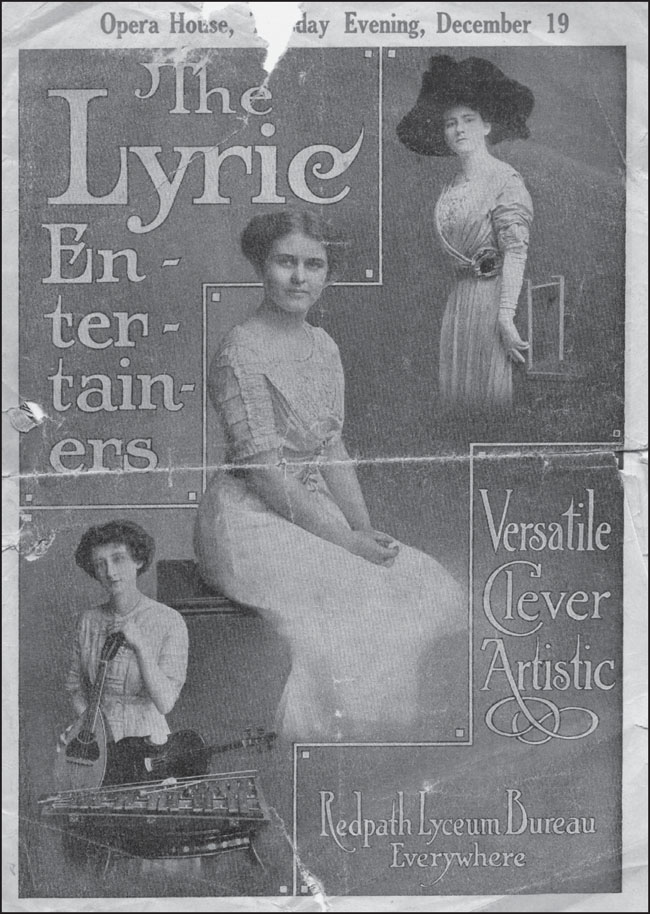
Picnics, Chautauquas, and boating and community gatherings were welcome affairs. Baseball teams played their way into the hearts of De Smet’s people. Any tavern big enough to have a dance lured in customers with the sounds of the latest tunes. Basketball filled the break between baseball and football seasons. All this, and more, was part of the entertainment of the era.
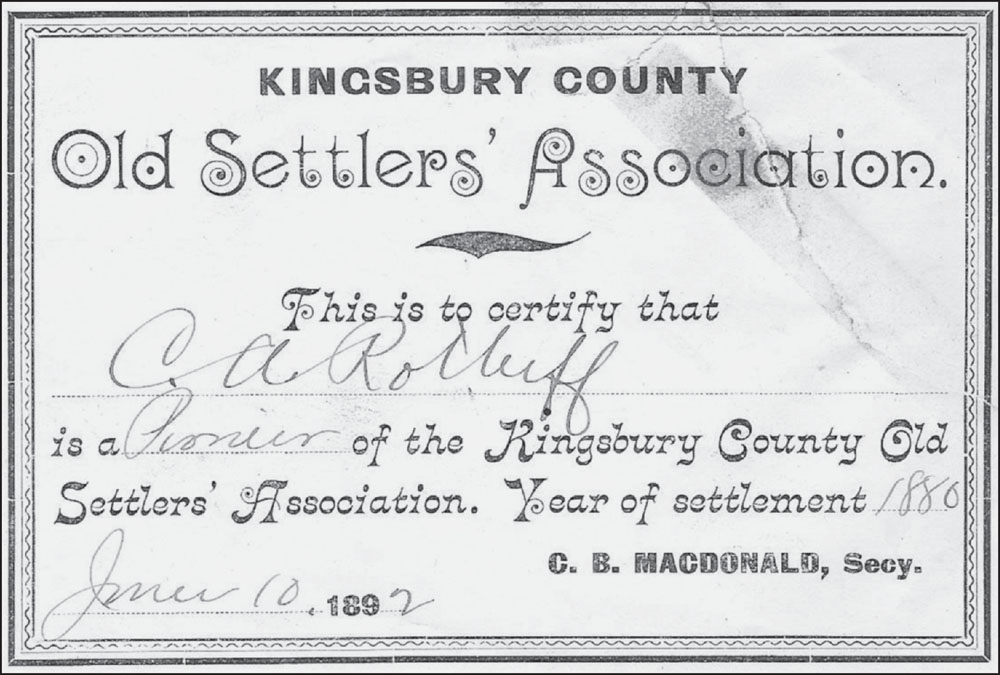
The longest continuous celebration in eastern South Dakota began in Esmond in 1888. For want of a better name, it was advertised as “Old Settlers’ Reunion.” It was an immediate success. On June 10, 1890, De Smet joined the celebration. Folks from all points of the compass converged on the small town. In the minds of many current De Smet citizens, June 10 is remembered as a gala event.
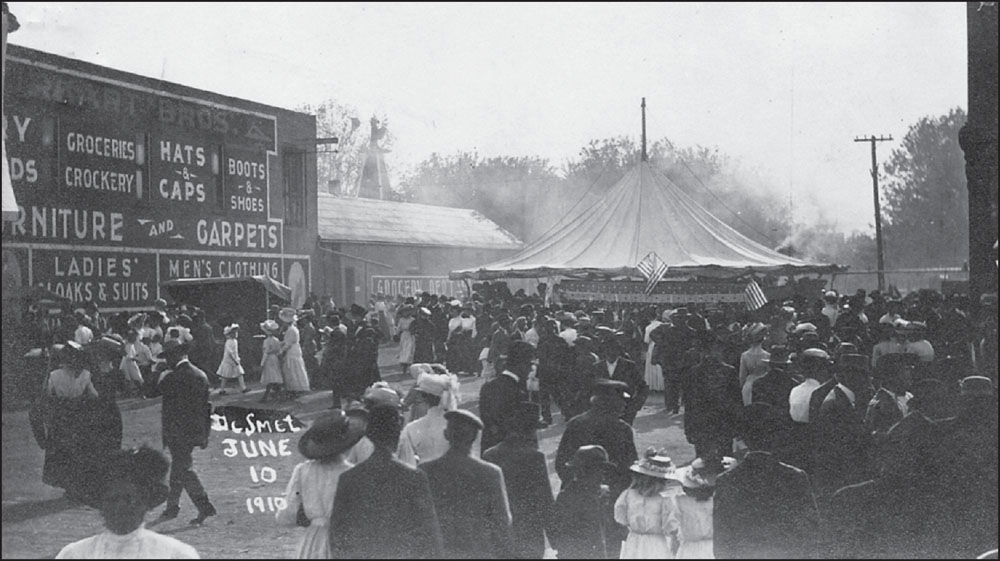
Excitement for the Old Settlers Day Celebration and the magic of the carnival has brought crowds of hundreds to De Smet since 1890, as seen in this June 10, 1910, photograph. The wooden windmill standing aloft to the right may have been one reason De Smet proclaimed, “We have ample water.”
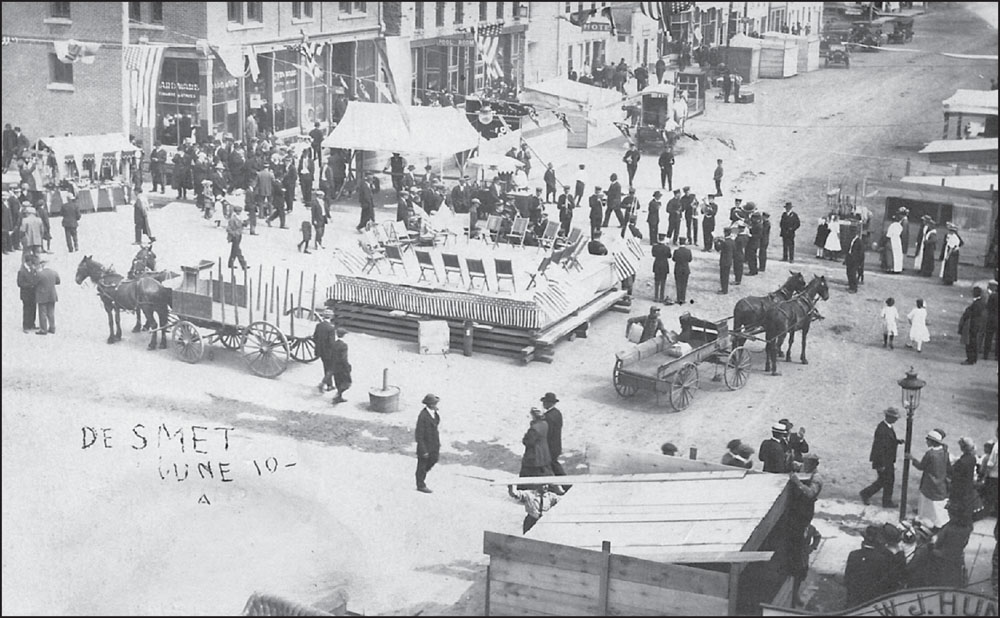
Miller’s Hardware, the pool room, and the hotel are in good positions on the west side of Calumet Avenue to witness all that is happening in De Smet on a June 10 around 1910.
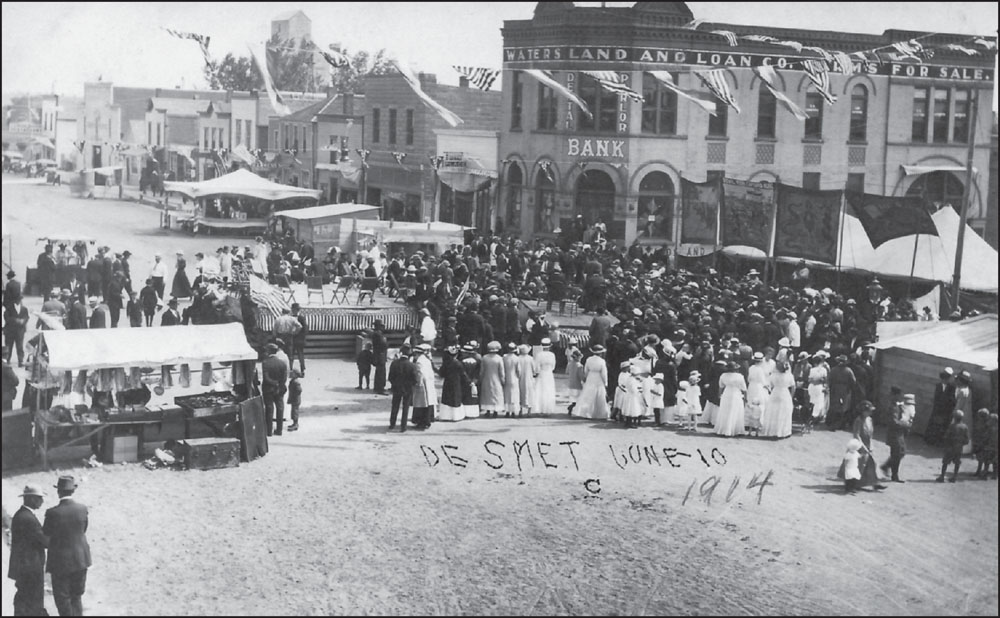
Waters Land and Loan building captures a large part of the northeast corner of Calumet Avenue and Second Street. However, all eyes seem to be turned to what is happening on the small stage nearly in the middle of the crowd. Painted ponies on the merry-go-round gallop in a circle of fun and laughter.
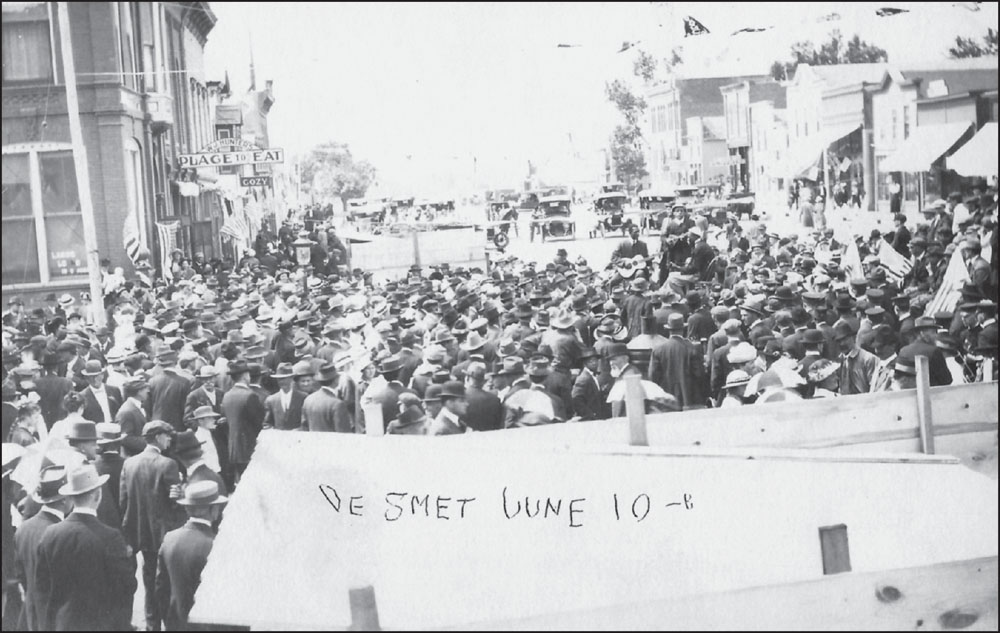
Large crowds gathered to celebrate Old Settlers Day on a June 10 in the early 1900s. The occasion meant bringing out “your best duds” and joining the festivities. W.J. Hunter, owner of Place to Eat, was probably grinning ear-to-ear in anticipation of serving many of the groups.
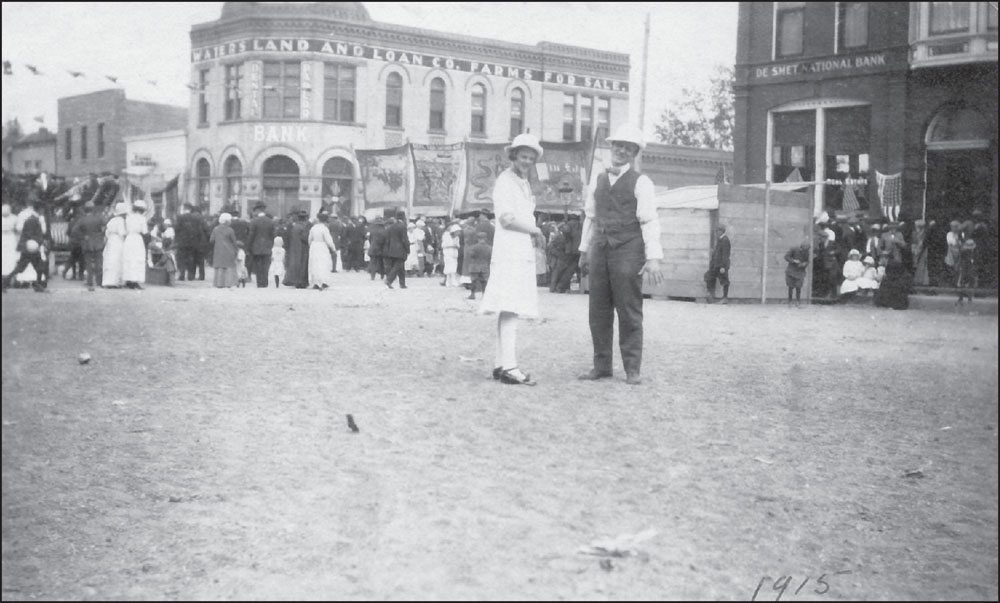
In 1915, F.L. and Ellen Brewer are all decked out for the June 10 celebration. The De Smet National Bank stands on the southeast corner of Calumet Avenue and Second Street. The sideshow banners can be seen stretching between the bank and the Waters’ Land and Loan.
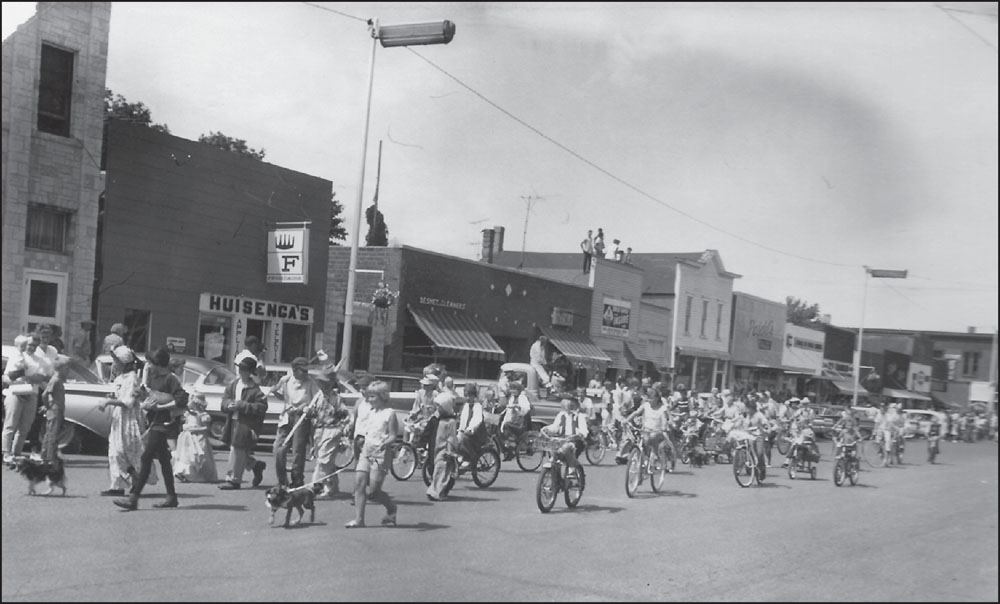
This picture is a collectible as it has Huisenga’s Appliance in the background. Huisenga’s history speaks of “taking on the Frigidaire line” in 1950. Owners moved the business farther north in 1968; therefore, the image can be dated to between 1950 and 1968. The parade appears to consist of children, bicycles, and dogs. Folks on top of Wika-Jensen Insurance have a bird’s-eye view.
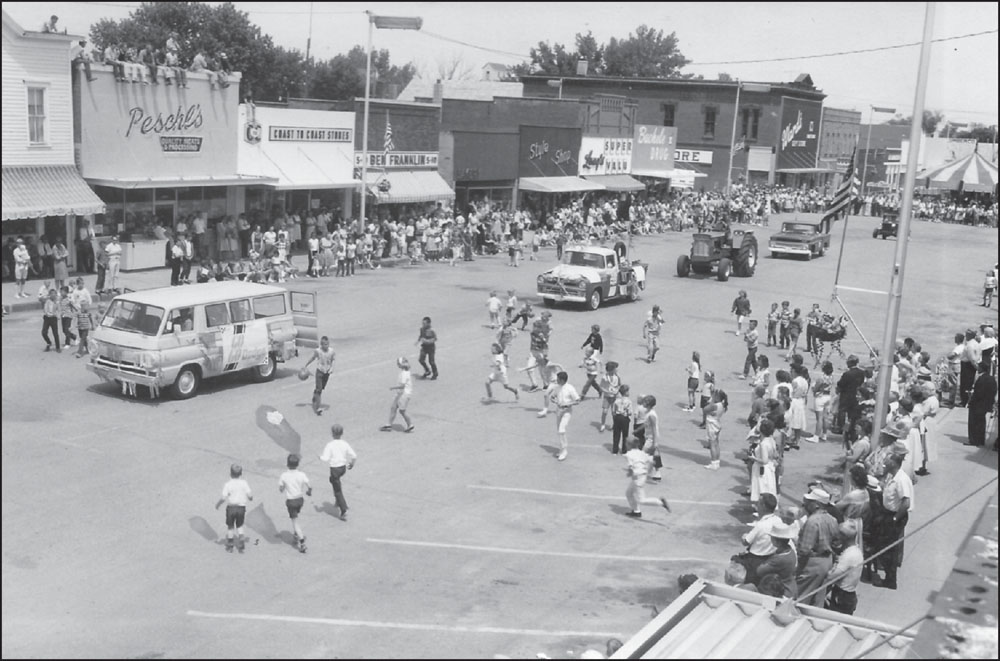
A few kids, a parade, some dogs, and crazy characters led to the wildest day that De Smet had ever seen when it held its first Circus Day event. Merchants dressed as clowns put on a real celebration. People for miles around attended the event. The top of Peschl’s building gave a perfect overview of all that was happening.
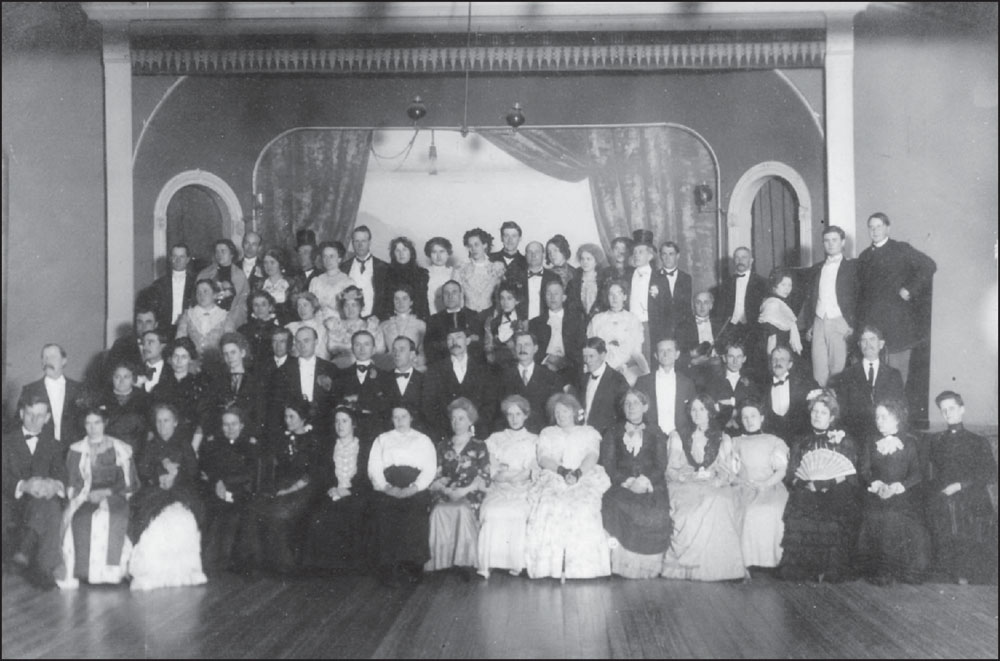
An opportunity to escape into another world came in the form of the play The Cloud Chasers, which was presented at Couse’s opera house. According to this photograph, a large cast was needed to produce and perform the play.
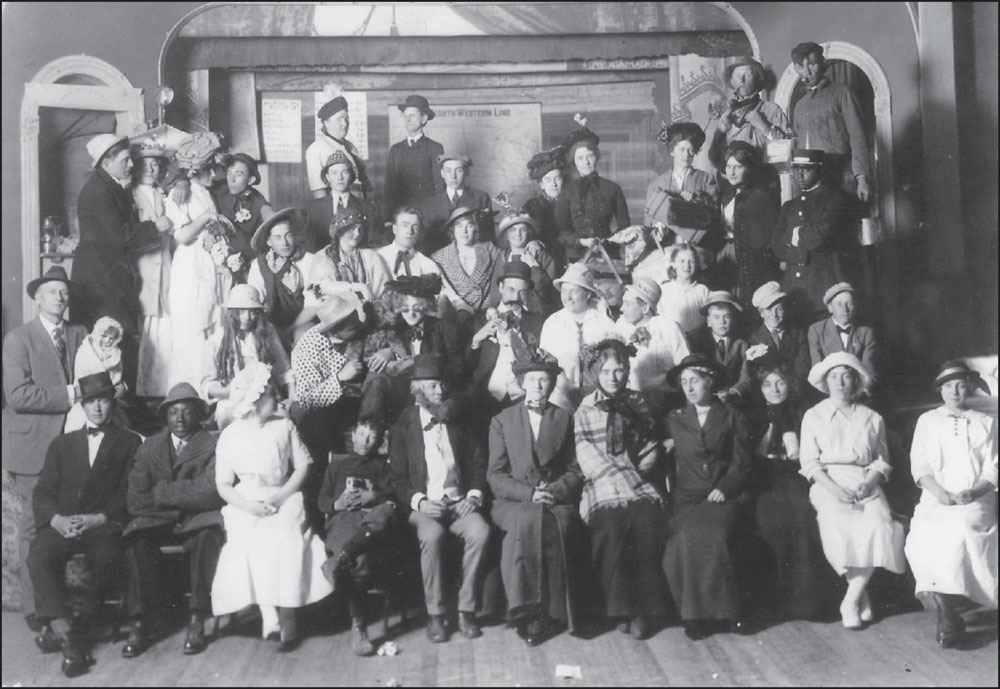
These performers put forth their best to make this play a success at the Couse Opera House. Some—maybe all—appear as though they remained in costume to have this photograph taken.
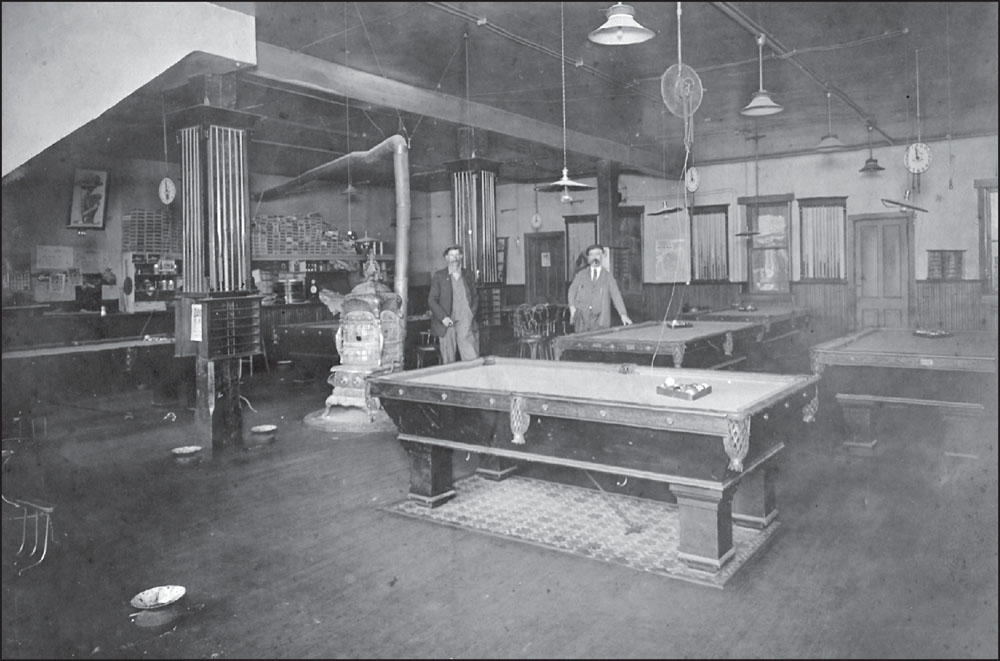
A town’s pool hall can be a lively crossroads where friends meet to exchange news and shoot some pool over a cool libation. Fred Floto stands to the right in this 1921 photograph of his pool hall, located where the present-day Dugout is on Calumet Avenue. Floto’s establishment was heated by the ornate coal stove to the left of the unidentified man.
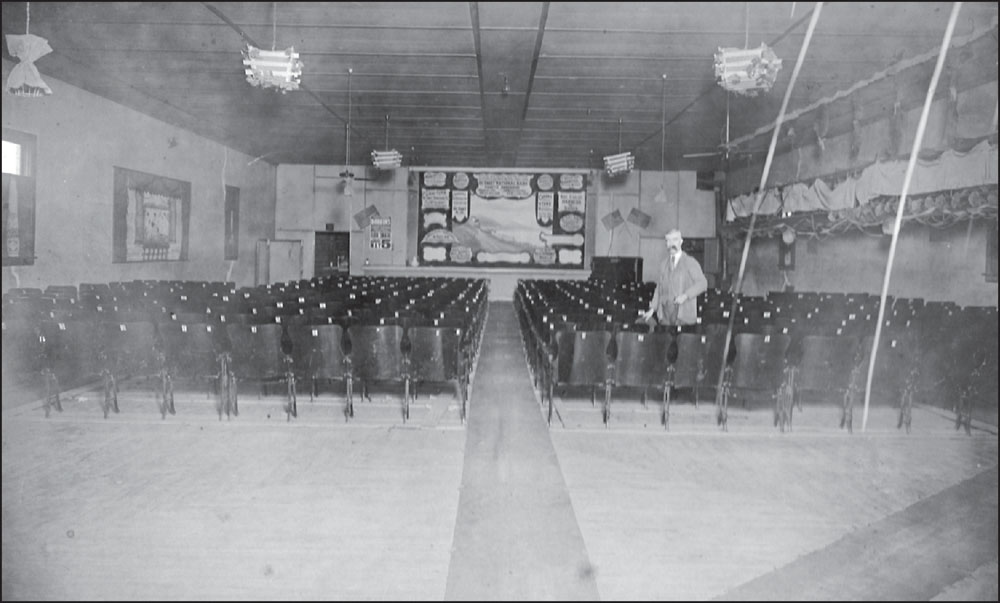
In this 1920 image, Fred Floto stands among the seats in his dance hall/theater that was in the back of his tavern/pool hall. The balcony on the right side is for extra seats when basketball games would be played here. Today, after some alteration, this section of the Dugout is still maintained for dances and other social events.
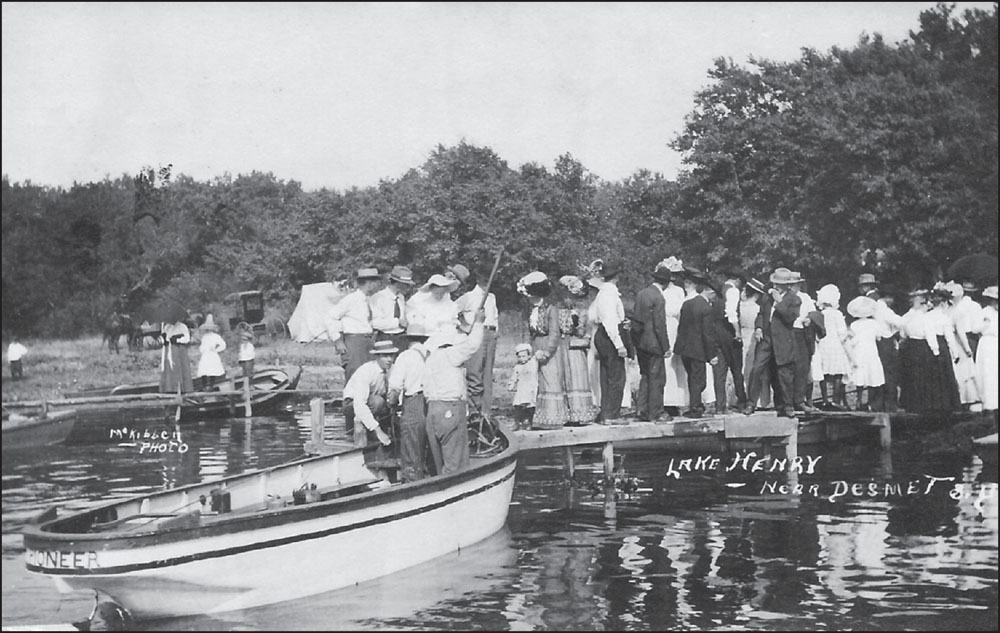
A McKibben photograph shows ladies, gents, and children waiting to step into the Pioneer on Lake Henry. Lake Henry was named for an Army surveyor and is one of the Twin Lakes, Lake Thompson being the other. The large grove seen in the back of this picture would have been perfect for a picnic, or, as the tent indicates, camping.
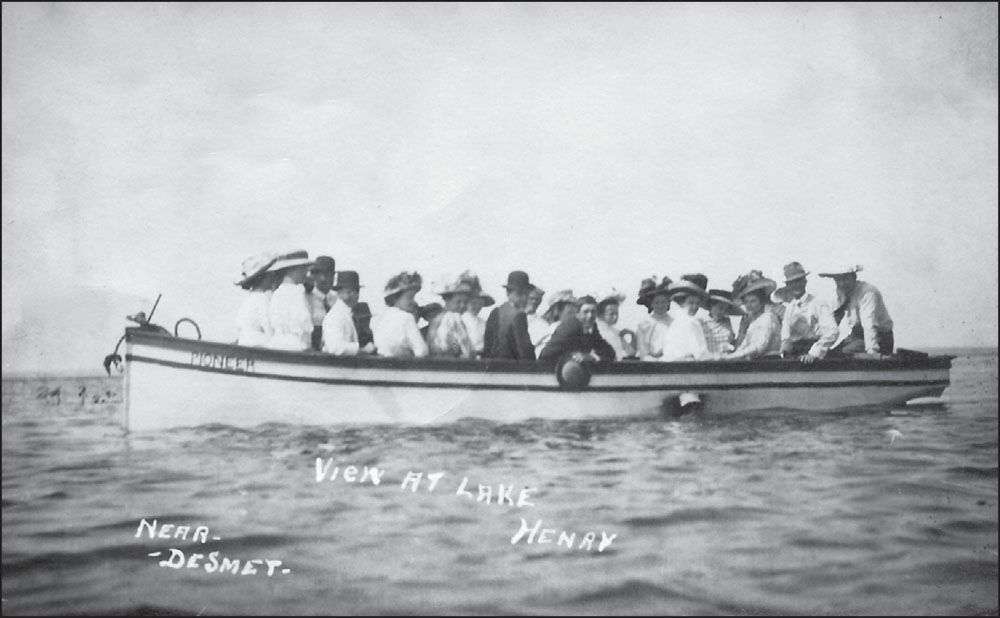
Lake-goers are afloat in a boat built by George Pirlet and Jim Patterson. Cruising on Lake Henry on a summer afternoon brings sweet memories of the rides they offered in their gas-powered boat. The Pioneer could accommodate 28 people, and it appears from looking at this photograph that they would have to have made more than one outing on some afternoons.
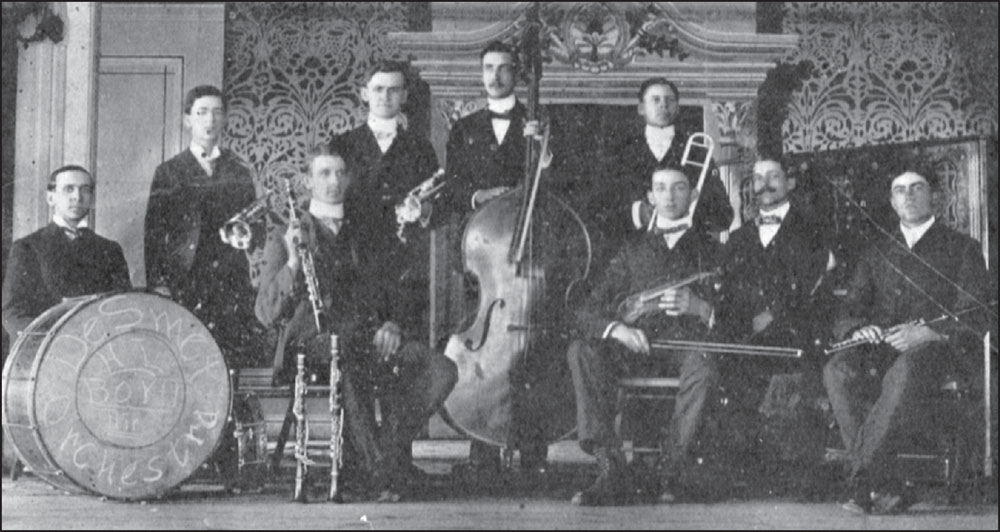
Even for those of modest or limited means, there was entertainment to be had in the small town. The De Smet Concert Orchestra appears to be set to go in the Couses’ opera house. Unfortunately, the names of the participants are unavailable.
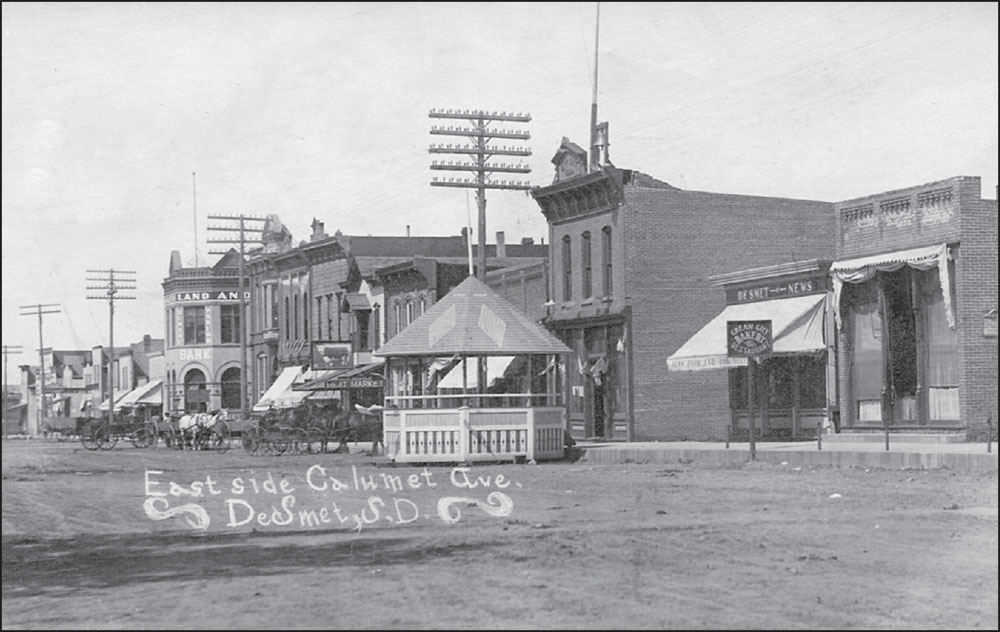
The city’s band shell stands just in front of the office of the De Smet News and the Cream City Bakery and Restaurant. Hopefully, all concerts were over by 9:00 p.m., when the curfew bell atop the city hall would ring.
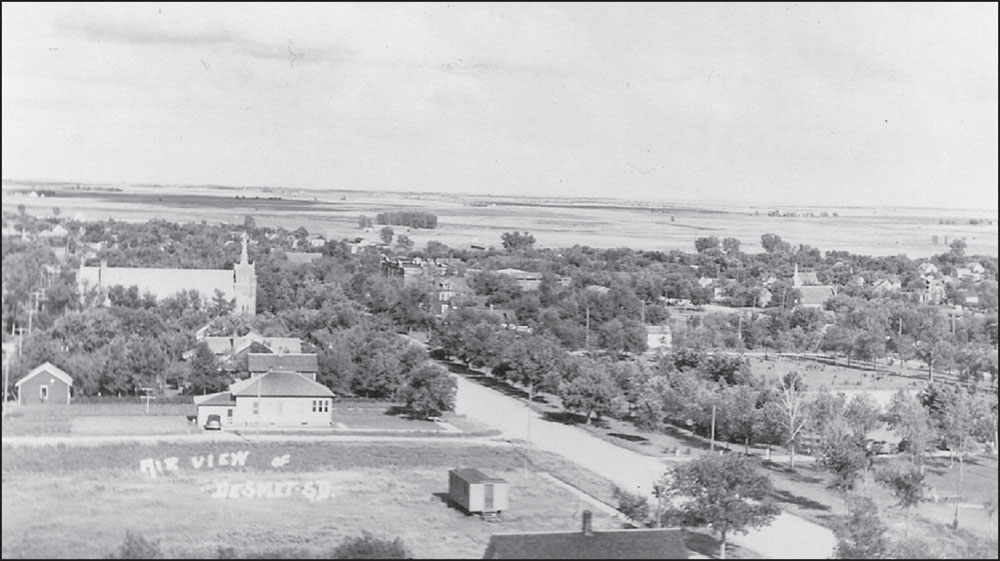
Washington Park lies in the west part of De Smet. The park became a public property through a bank failure in 1929. Already existing, several trees made it an ideal city park. In 1930, driveways were added—one running north-south (seen in the picture, just at bottom edge; it no longer exists); the other, east-west, continues today to divide the park area from the athletic complex.
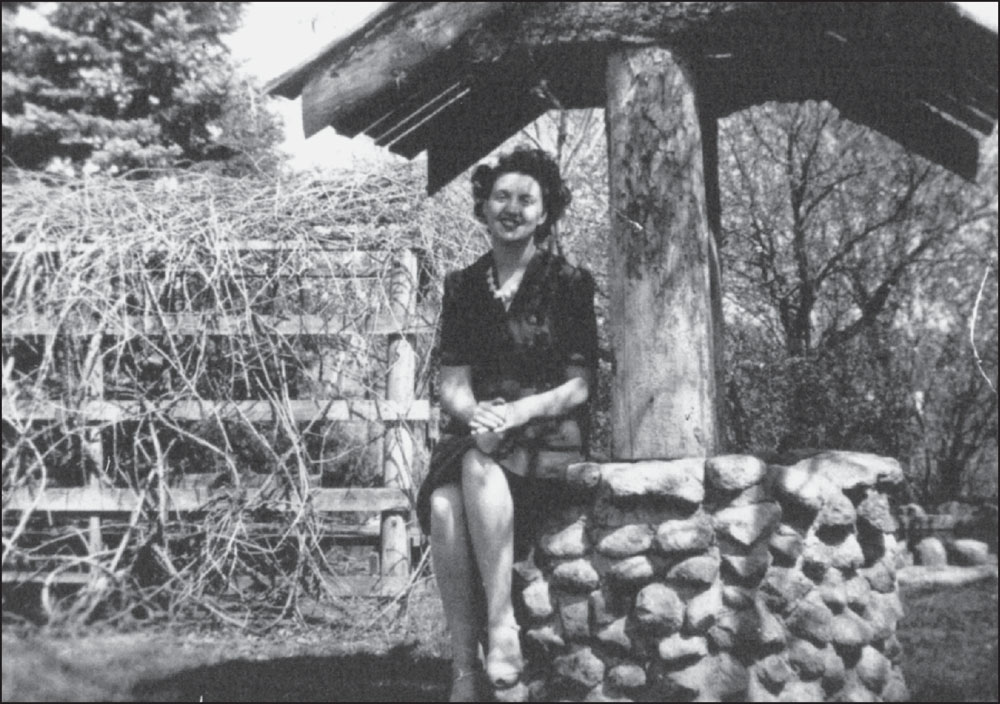
This c. 1940 image shows Dorothy (McAdaragh) Smith sitting on the wishing well in Washington Park. Long-gone now, the grape arbor would have been beautiful come spring and summer. To the delight of youngsters, the pond, just to the right corner, was filled with goldfish.
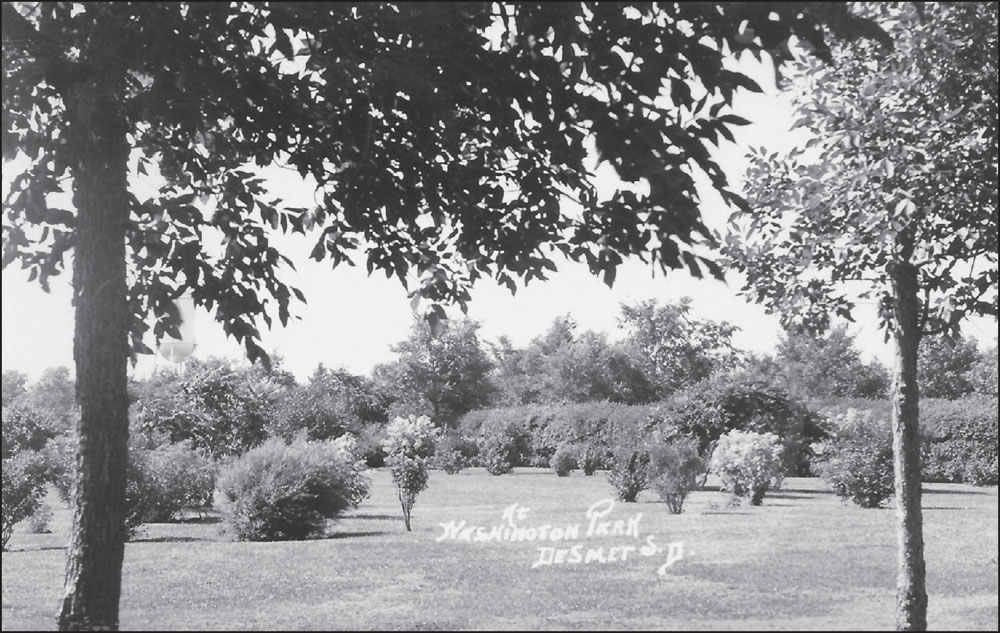
The beauty of Washington Park is seen here. The city’s water tower is visible to the top left of the picture. The park continues to be an attraction for many people and organizations. Family and class reunions are often held within its shady confines.
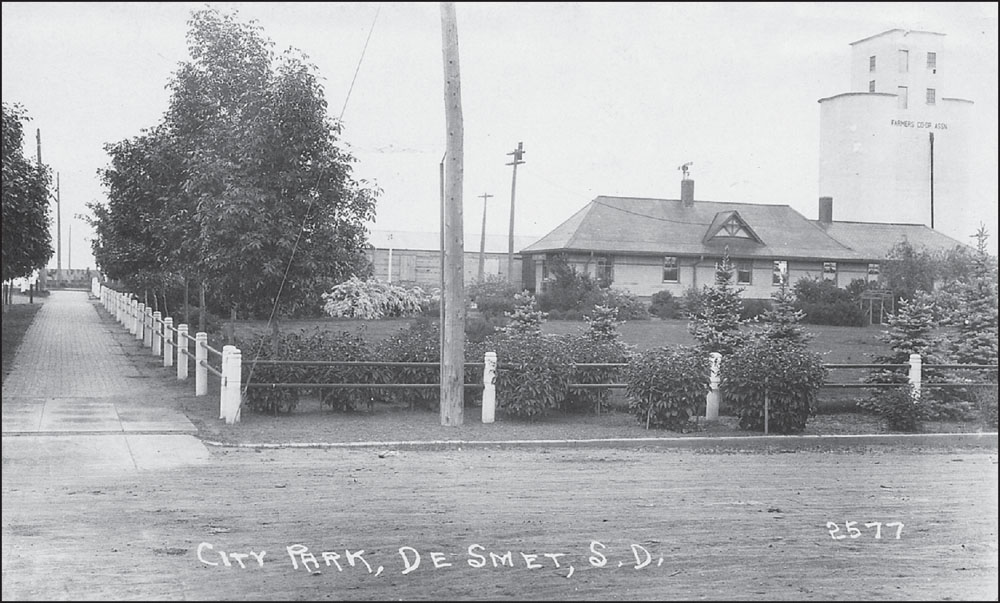
Shown here is the first park in De Smet. Still known as the Railroad Park, it no longer sports the fence; however, the brick walk to the left remains. The many voices of children could be heard in play in days gone by; now, the voices of those living in apartment houses or private homes can be heard. The Farmers Co-op (later Sexauer) elevator was razed 2009.
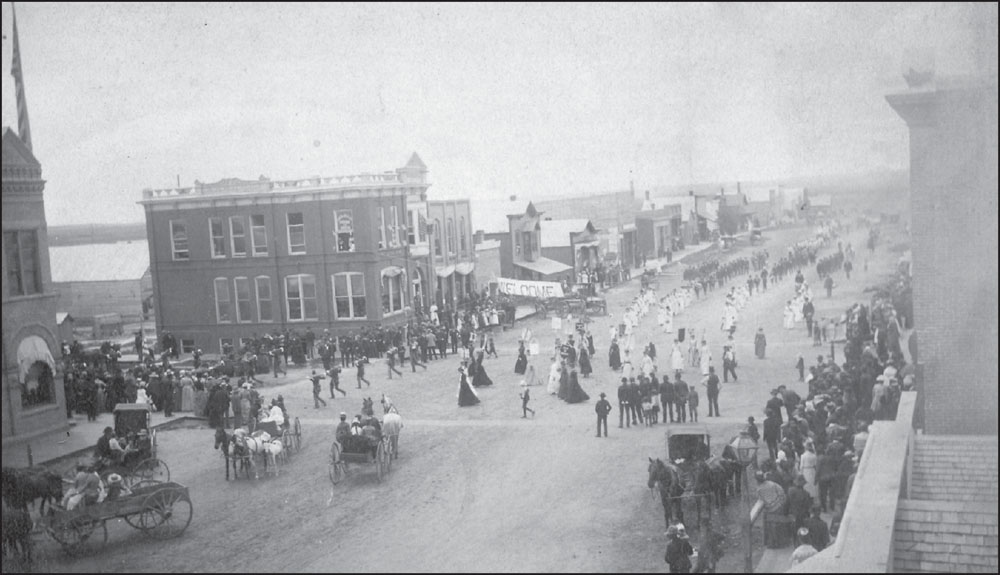
The June 10, 1920, De Smet News reports that 42 Esmond young ladies costumed as representing the states and 24 Merchant’s Carnival young ladies with banners, all under command of Laura Remington, formed part of the parade that marched down Calumet Avenue and Second Street to the grandstand near the courthouse square.
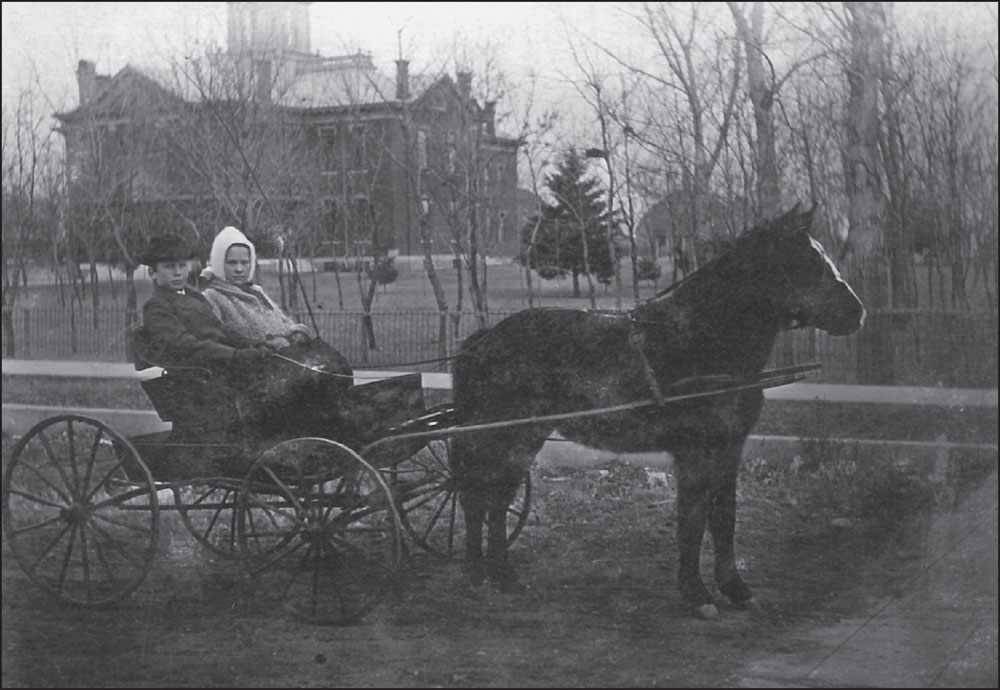
Henry and Ethel Montross relish a simple pony-and-cart ride down Joliet Avenue on a crisp, cool, autumn day. In 1920, the county board decided to make a park out of the courthouse grounds because of the large expanse of lawn, trees, bushes, and gravel walks. It would be assumed this picture was after 1920, as the walk appears to be cement.
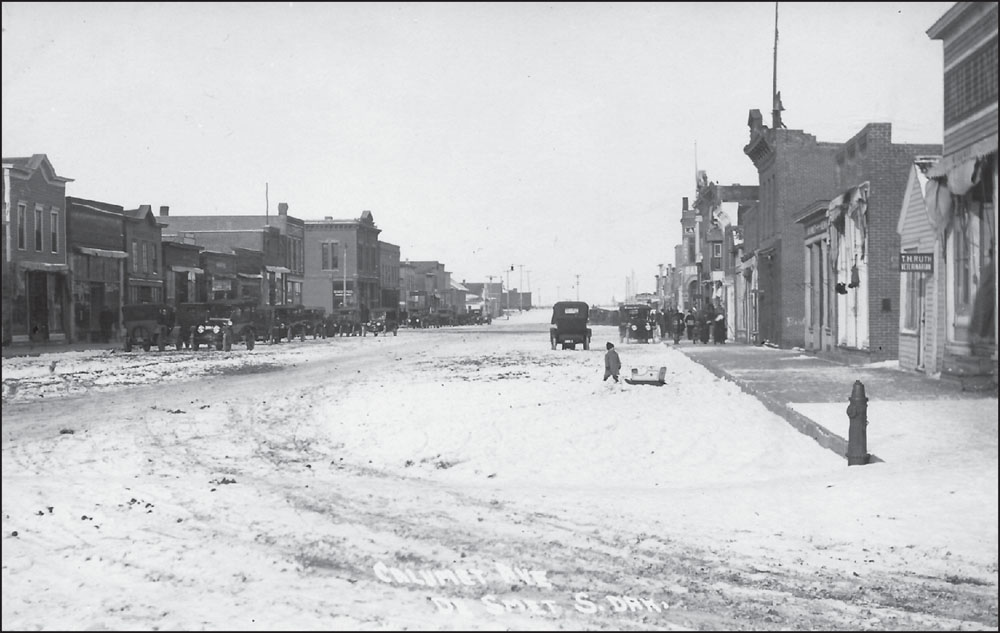
The snowpack along Calumet Avenue was the perfect place for young children to pull their sleds in 1916.
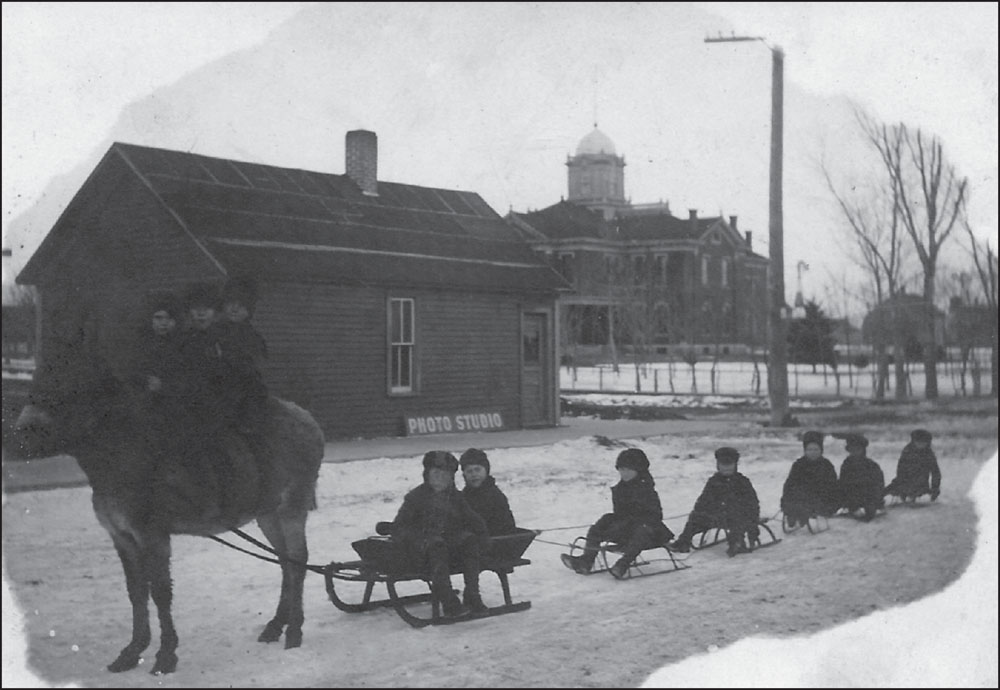
Here is a smart bunch of kids: They let the horse do the work. Ten young children linked together by rope and sled made for winter fun down snowy Second Street. This image was taken before 1920, as there is no cement walk in front of the courthouse fence.
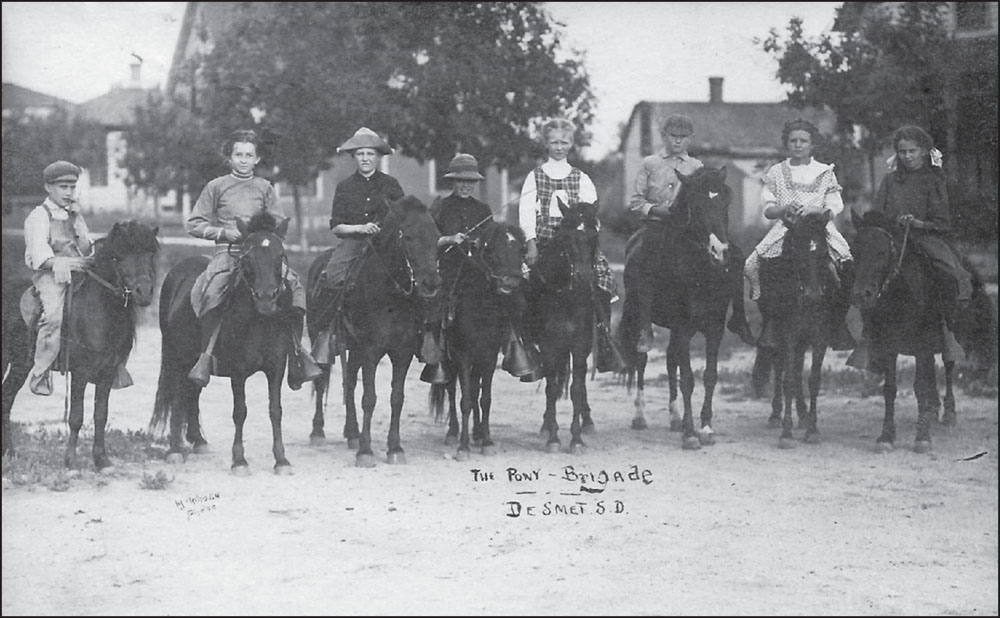
Several postcards depicting De Smet’s history show pony brigades. The first young lady to the right in this image is Florence Zahler (Munger).
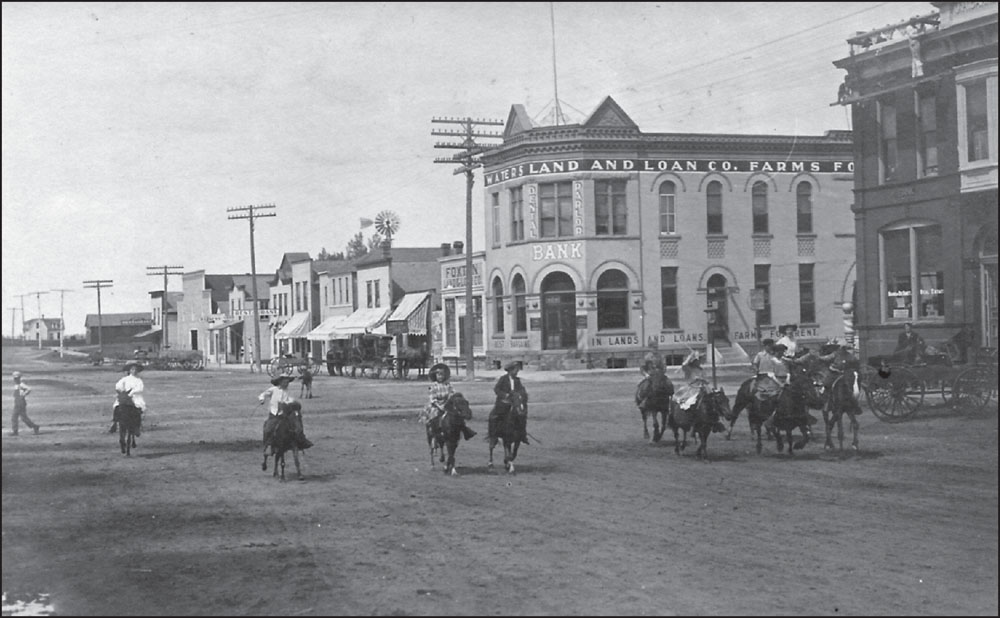
The wide Calumet Avenue gave ample room for the pony brigade to make a run for it, and these playmates appear to take advantage of the opportunity. They have even caught the attention of the gentleman standing on the scaffolding near the top of the bank building.
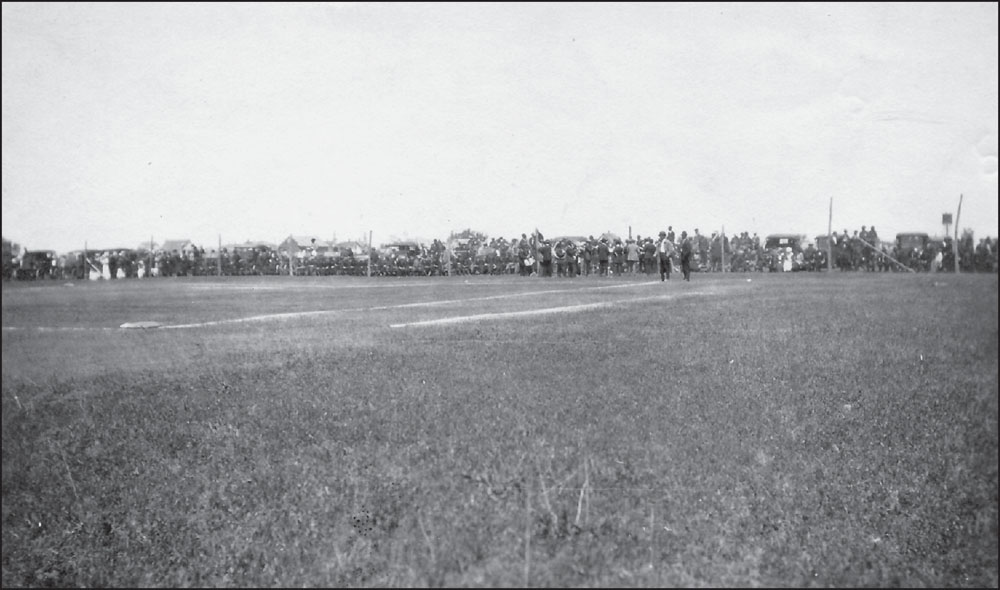
In 1903, six acres were purchased in east De Smet by an athletic association. In 1920, the city bought the site as a ballpark (4-H grounds) and erected a concrete grandstand, high board fence, and a woven wire fence.
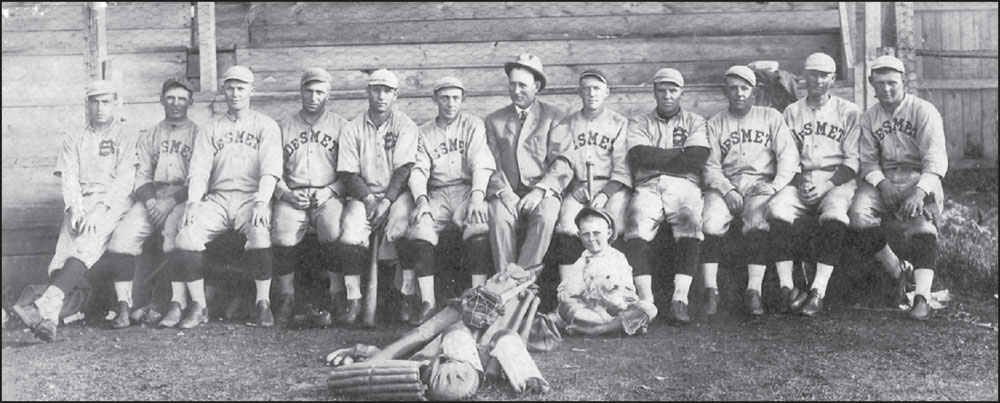
The spectator sport of baseball has long claimed the leisure hours of De Smet residents. This image is believed to be of the 1920 ballpark because of the board fence and woven wire fence in the background.
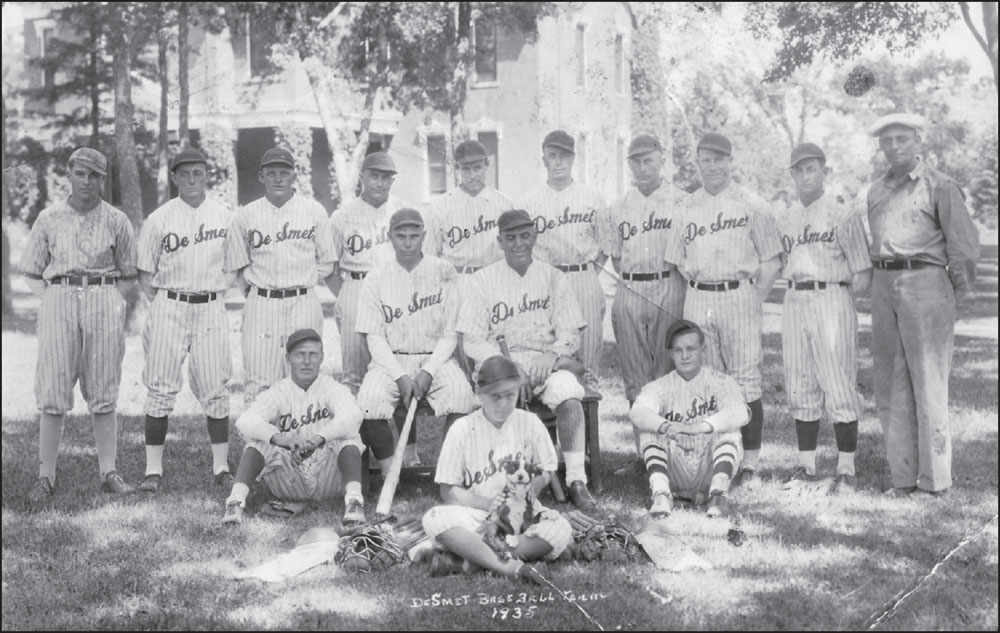
This picture of one of De Smet’s baseball teams includes, from left to right, (first row) Howard Schultz, batboy Frankie Hargrove, and Vincent Antle, (second row) Harold Hargrove and Claude Phinney; (third row) DeVere “Nuke” Meyers, Charles Warner, Ross “Hi” Minier, Ben Valder, Russ Hunter, Ray Anderson, Roy Johnson, Francis Geisen, Lester Rodney, and umpire Herman Grothe.
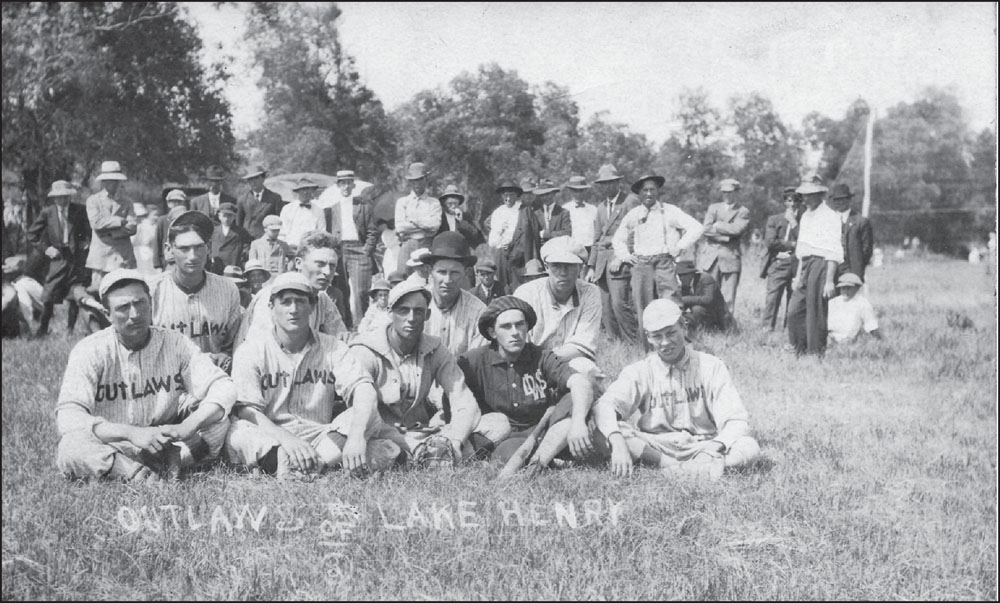
This c. 1920s image shows the Lake Henry Outlaws, a team to be reckoned with. Phyllis Taschner, daughter of Olai Johnson, identified those pictured as, from left to right, (first row) Henry Forsburg, Emmett McKittrick, Herman Grothe, Vern Washburn, and Roy Johnson; (second row) Owen Grothe, Olai Johnson, ? Steenson, and Paul Dahl. Not pictured is Elmer Forsburg.






























